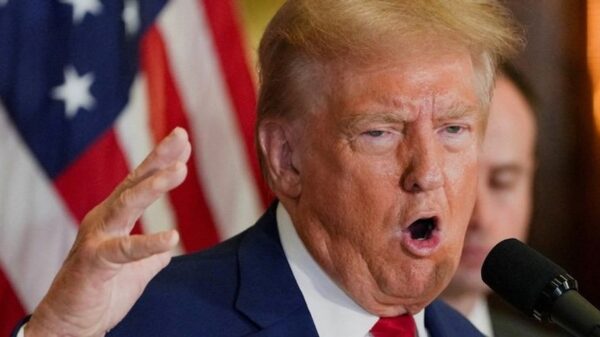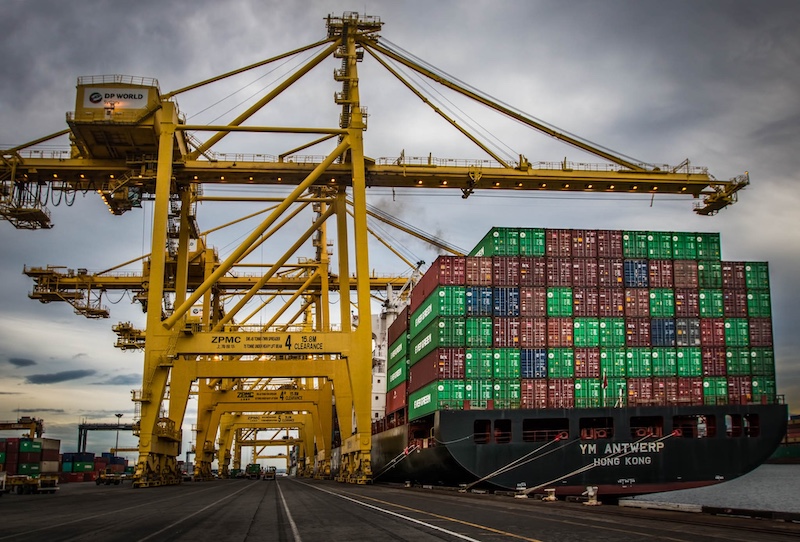Chinese shipping to the United States has suffered a dramatic decline, with vessel entries dropping by more than 90 percent since January 2025. This significant downturn, highlighted by data from maritime analytics firm Pole Star Global, indicates a rapid deterioration of trade relations between the two largest economies in the world, exacerbated by rising tariffs and new port fees.
According to Pole Star, the number of Chinese ships arriving at U.S. ports fell from 1,678 in January to a mere 156 by October 2025. The introduction of reciprocal port fees and the renewed threat of tariffs from the Trump administration are key factors behind this steep decline. Saleem Khan, chief data and analytics officer at Pole Star, expressed concern about the trend: “We are seeing Chinese vessels that are being screened by our customers nearing zero.”
The downturn closely aligns with President Trump’s warning of potential additional tariffs of 100 percent on Chinese imports. If implemented, this would raise the total tariff rate on certain goods to approximately 130 percent. In a statement earlier this month, Trump framed the tariffs as a strategy to “protect American workers” and push Beijing toward “fair trade.” Economists warn that such a move could destabilize global supply chains.
Reports indicate that the proposed tariffs would double the current rates applied to around $360 billion worth of Chinese imports, potentially imposing hundreds of billions in additional costs on U.S. companies reliant on Chinese goods.
Impact of New Port Fees
The maritime industry is also confronting new financial constraints. Both the U.S. and China have begun enforcing special port fees on each other’s ships. Chinese vessels arriving in U.S. ports now incur fees based on gross tonnage, while China has imposed its own tariffs of 400 yuan per ton, which is expected to rise to 1,120 yuan by 2028. Analysts estimate that these cumulative costs could reach between $20 billion and $23 billion annually if trade volumes return to previous levels—although current data suggests that these volumes are instead collapsing.
The immediate consequence is a disruption in logistics. Khan notes that shipping companies are already altering their routes in response to the new fees. “As you can see with Pole Star data, the new port fees have already started to change behavior in the shipping market,” he said. “In the short term we should expect route changes, void sailings, and noticeable upward pressure on freight rates as carriers implement surcharges or General Rate Increases (GRIs) to pass costs to shippers.”
Beyond shipping lanes, the ramifications are likely to be felt across various sectors. China remains a crucial supplier of consumer electronics, automotive parts, and industrial machinery to the U.S. A prolonged disruption in maritime trade may lead to shortages, inflationary pressures, and production delays.
Economists highlight that even before any new tariffs are enacted, the anticipation of these measures is already dampening trade flows, as importers scramble to hedge against increased costs or shift their supply chains. Coverage from Al Jazeera suggests that the renewed tariff threat serves both economic and political agendas, appealing to domestic manufacturing constituencies ahead of the upcoming elections in the U.S.
In a responsive statement, China’s Commerce Ministry condemned the U.S. actions as “wilful and harmful,” cautioning that necessary countermeasures would follow if the 100 percent tariff plan proceeds.
Potential Long-Term Consequences
The combination of tariffs, port fees, and retaliatory measures has brought trade between the U.S. and China to a near standstill. Data from Pole Star, which tracks vessel movements, provides a real-time indicator of this trade slowdown before it is reflected in official statistics. Observers, including Khan, suggest that these trends could signal a more permanent shift in global commerce.
“Trade routes can change faster than policy. Once ships stop coming, restarting them is not easy,” Khan remarked. If the proposed tariffs are implemented and port fees remain in effect, the world’s busiest trade corridor could experience its lowest activity levels in decades. This situation not only represents a trade dispute but may also mark the beginning of a structural decoupling between the U.S. and China, potentially redefining global logistics for years to come.







































































